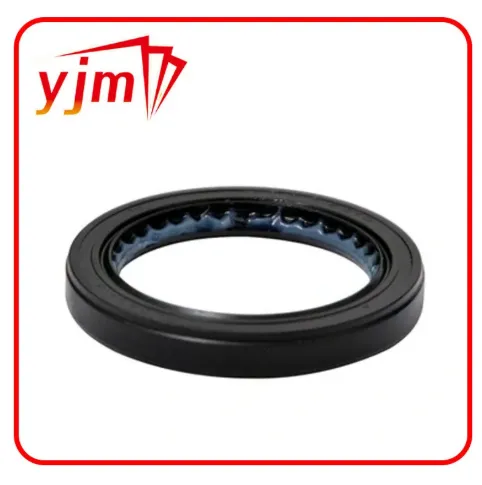Understanding Polaris Front Differentials: A Guide for RZR, Ranger, and General Models
The front differential is a critical component in any 4x4 ATV or UTV, especially in demanding off-road environments. For Polaris vehicles like the RZR, Ranger, and General, the front differential plays a key role in power distribution and traction control. Whether you're performing routine maintenance, diagnosing front-end issues, or considering upgrades, understanding how the Polaris front differential system works can save you time, money, and trouble on the trail.

What Does a Front Differential Do?
In any 4WD or AWD system, the differential front (commonly called the front diff) distributes torque between the two front wheels while allowing them to rotate at different speeds. This function is essential when turning, driving over uneven terrain, or operating in slippery conditions.
In Polaris off-road vehicles, the front differential also engages and disengages based on rider input or electronic demand (like the AWD or VersaTrac system). It’s often housed in a compact aluminum or magnesium case mounted at the front of the chassis, connected to the transmission via a driveshaft.
Functions of a Polaris Front Differential:
Provides torque to front wheels during AWD operation
Allows wheels to rotate independently for better handling
Contains internal components such as gears, bearings, and a Sprague carrier (used in AWD systems)
When working properly, the front differential enhances control, traction, and safety—particularly in mud, snow, or steep terrain.
Key Differences Between Polaris RZR, Ranger, and General Front Differentials
Polaris manufactures several popular off-road platforms, including the RZR, Ranger, and General. While all three use a similar AWD system architecture, their front differentials differ slightly in terms of design, gearing, and durability.
Polaris RZR Front Differential
The Polaris RZR front differential is designed for high-speed performance and aggressive off-road driving. In sport models like the RZR XP 1000 or RZR Turbo, the front diff must handle:
Rapid acceleration
Sudden torque shifts
Tight steering under load
Many RZR models feature a Visco-Lok or Sprague carrier-style AWD system, which automatically engages the front diff when rear wheels slip. These systems use rollers inside a plastic or aluminum cage to activate front-wheel drive—a point of wear in older models, especially in the RZR 800 front diff.
RZR 800 Front Diff Tip: The RZR 800 is a legacy model, and its differential is known for Sprague cage wear or breakage. Upgrading to a billet aluminum cage can drastically improve longevity.
Polaris Ranger Front Differential
Built for utility and hauling, the Polaris Ranger front differential emphasizes durability and smooth engagement. Many models feature:
Turf mode (open rear diff) and AWD options
Heavier internal gears for towing
Sealed systems with less aggressive engagement
While not built for racing, the Ranger's differential is solid and reliable. Issues may arise with excessive wear from towing heavy loads or contaminated oil due to infrequent maintenance.
Polaris General Front Differential
The Polaris General front differential combines traits from both the RZR and Ranger lines. It offers performance-oriented engagement with a utilitarian edge, making it ideal for both work and recreation.
Shares similar design to the RZR XP 1000 front diff
Stronger internals than Ranger models in some trims
Often used with high-clearance suspension setups
Because the General shares a chassis with certain RZR models, many of their differential parts are interchangeable—useful when sourcing components or upgrading to aftermarket parts.
Maintenance and Troubleshooting Tips for Polaris Front Diffs
Whether you're riding a Polaris RZR, Ranger, or General, front differential issues can arise from wear, contaminated fluid, or component failure. Regular maintenance and early detection are crucial.
Common Symptoms of Front Diff Problems:
Clicking or grinding noises from the front end
Jerky AWD engagement or failure to engage
Metal shavings in differential oil
4WD light flashing or error codes
Maintenance Checklist:
Change differential fluid every 50–100 hours (use Polaris Demand Drive Fluid or equivalent)
Inspect and clean magnetic drain plug
Replace worn Sprague carrier, armature plates, or seals as needed
Use OEM or reputable aftermarket rebuild kits
For the RZR 800 front diff, consider replacing plastic components with billet versions. On Polaris Ranger and General models, fluid changes and checking seals for leaks can prevent costly repairs.
Pro Tip: Always torque differential cover bolts to spec and reseal with RTV to prevent leaks during rebuilds.
The Polaris front differential is the heart of your AWD system, enabling your RZR, Ranger, or General to tackle mud, hills, and rough terrain with confidence. From the performance-driven RZR front differential to the rugged and reliable Ranger front diff, understanding how each system works—and how to maintain it—is essential for any Polaris owner.
-
High-Quality Seal 12x22x5 for Industrial & Automotive Use | YJM Seal
ข่าว Nov.25,2025
-
Seal 12x20x5: Precision Radial Shaft Seals for Industrial Reliability
ข่าว Nov.24,2025
-
Seal 12x18x5: Essential Guide to Specifications, Applications & Vendors
ข่าว Nov.24,2025
-
Understanding Seal 12 20 5: Applications, Specifications & Industry Insights
ข่าว Nov.23,2025
-
Durable Oil Seal 85x110x12 – Reliable Sealing Solutions for Industry
ข่าว Nov.23,2025
-
Durable and Precise Oil Seal 75x95x10 for Efficient Machinery | YJM Seal
ข่าว Nov.22,2025
-
Durable Oil Seal 75x100x10 for Reliable Industrial Performance | YJM Seal
ข่าว Nov.22,2025
หมวดหมู่สินค้า















